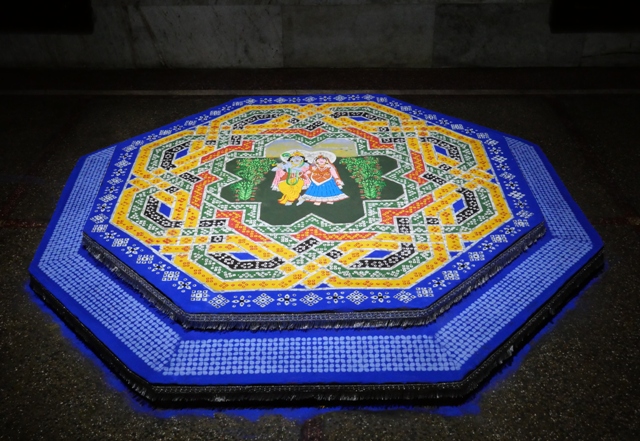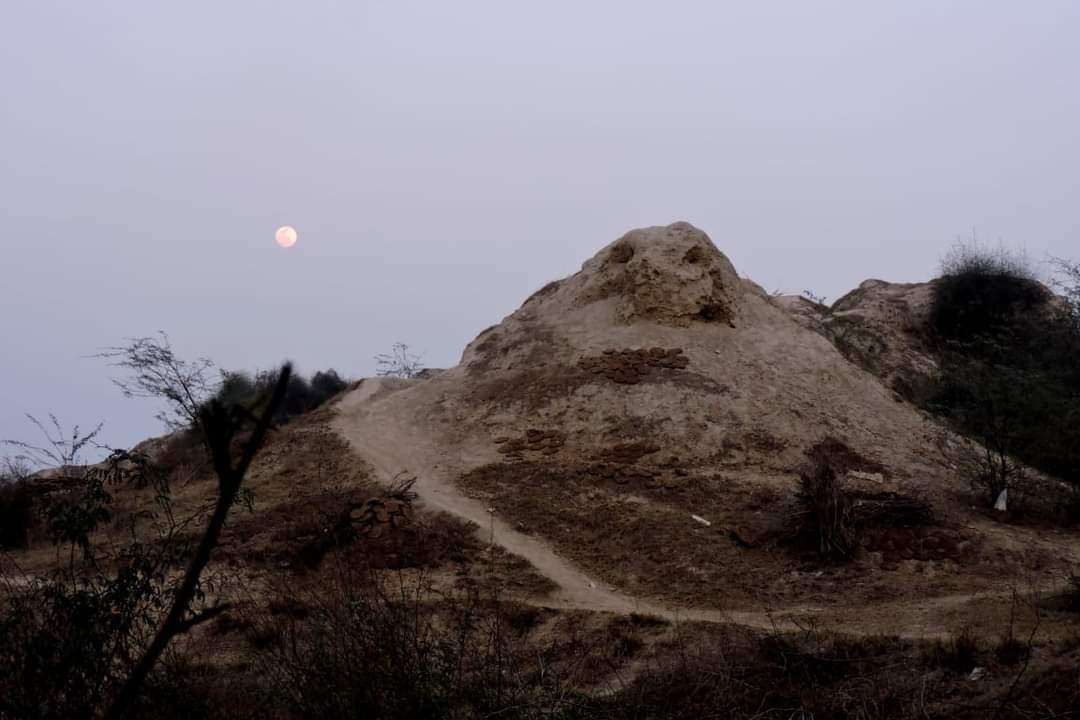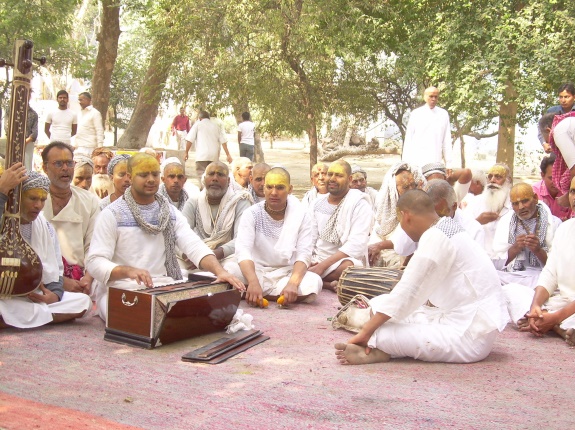Holi is the festival of colors, people apply colors on each other and play with colors. It comes during the harvest time in North India ,Weather is just perfect, with winters behind and summers yet to set in. The festival is celebrated across most of India although playing with colors is more popular in North India. In Braj, the festival lasts for roughly 40 days beginning from Basant Panchami. While most of India celebrates Holi with colors and music, in Braj there are different types of celebrations. Each has its own date and venue ,the villagers of Mukhrai village in Braj celebrates Holi by organizing the Mayur Nritya (peacock dance) and Charkula dance while splashing colors on each other after the event . Mukhrai is the village in Mathura District,this is the village of Srimati Radharani’s maternal grand Mother (Mother of Kirtida) Mukhra Devi the village is named after name of Mukhra Devi. When Srimati Radha Rani was born, Mukhra Devi lit up the lamps on the chariot wheel and danced with it on her head , It was the third day from Holi on the Dvitiya.Later with passage of time this dance came to be known as Charkula dance. It is believed that it comes from the word – Chakra which means wheel or a circular shape. It is still performed in the Mukhrai village on last day of Braj Holi festivities.Charkula dance is popular dance of the Braj region. It graces several auspicious occasion of Braj and the state of Uttar Pradesh. In this dance, performers are veiled women who balance a large multi-tiered circular wooden pyramid on their heads and dance on the rhythm of Rasiya which are songs dedicated to Srimati Radharani and Krishna. Rasiya songs describe the love of the divine couple Radha and Krishna and are sung accompanying the rhythm of huge drums.The instruments used in this dance are Nagara (drum), Algoza (wind instrument), Thali (brass plate used for beat), Bansuri (flute), Manjira, Kartal (cymbals) and harmonium. Another legend related to the birth of this dance is based on the story of Krishna’s ‘Govardhan lila’ . Lord Krishna lifted Govardhan Parvat (mountain) and held it on his finger to save the villagers from the wrath of the rain God Indra. In the process of dancing, female dancers start raising Charkula over their head in order to symbolize the hill. Sri Pyare Lal Ji of Mukhari Village gave new look to Charkula Dance in the year 1845.He made tapered wooden column with 5 circular tiers with 108 earthen lamps are lit on the rim of the circles ,it weights around 40 kg.The women keeps this Charkula on their head and dances near Madan Mohan Temple in Mukhrai Village. This dance also signify the lifting of the Govardhan hill by Krishna which is re-enacted by these women dancers of Mukhrai Village.Lakshmi Devi and Ashrafi Devi of Mukhrai Village performed this dance from 1930 to 1980. The Charkula dance is performed by women wearing ankle length long skirts with a long and colorful embroidered blouse. Due to heavy load of the Charkula, the steps of the dancers are quite limited but as they balance the wooden pyramid on their head, they manage to synchronize with the beats of the drums and the tune of the song with graceful moves like gliding, bending and whirling. The number of performers ranges from five to fifty and at the climax male singers and dancers also join the performance. This ancient Indian folk dance form reflects the life style and beliefs of the people associated with it. In the contemporary times educational institutions are promoting this dance form in their cultural events. Due to its gaining popularity, Charkula dance has become the popular dance of Uttar Pradesh.Sri Madan Lal Ji and Sri Chagan Lal Ji with Lakshmi Devi Ji of Mukhrai Village took this Dance to abroad in the year 1992,their first performance was in Mauritius and after that they performed several performances in other parts of the world and made this beautiful folk dance of Braj popular in all over the world.
.





